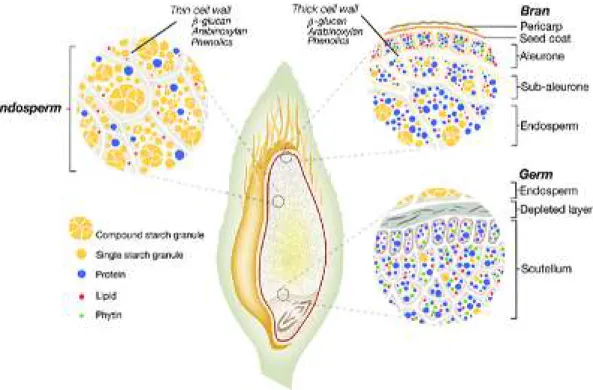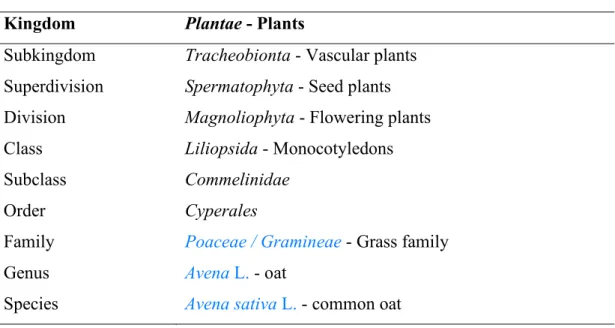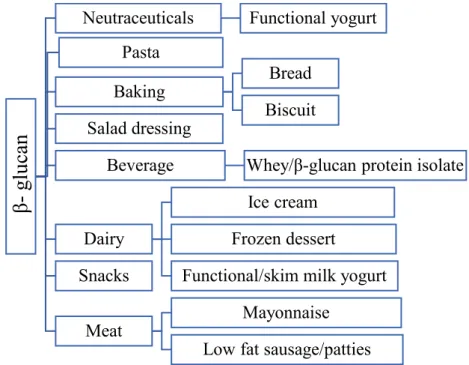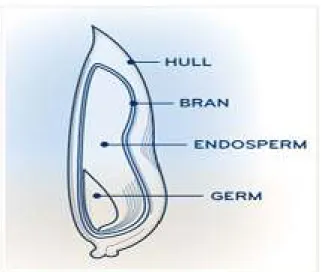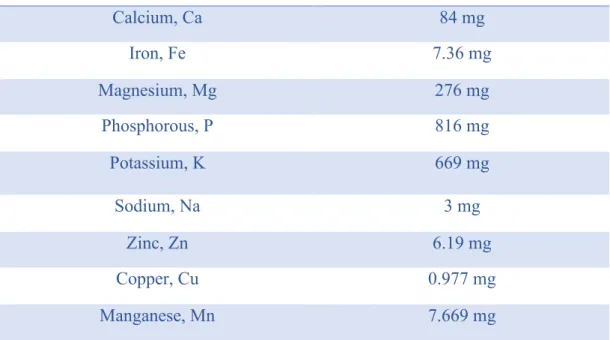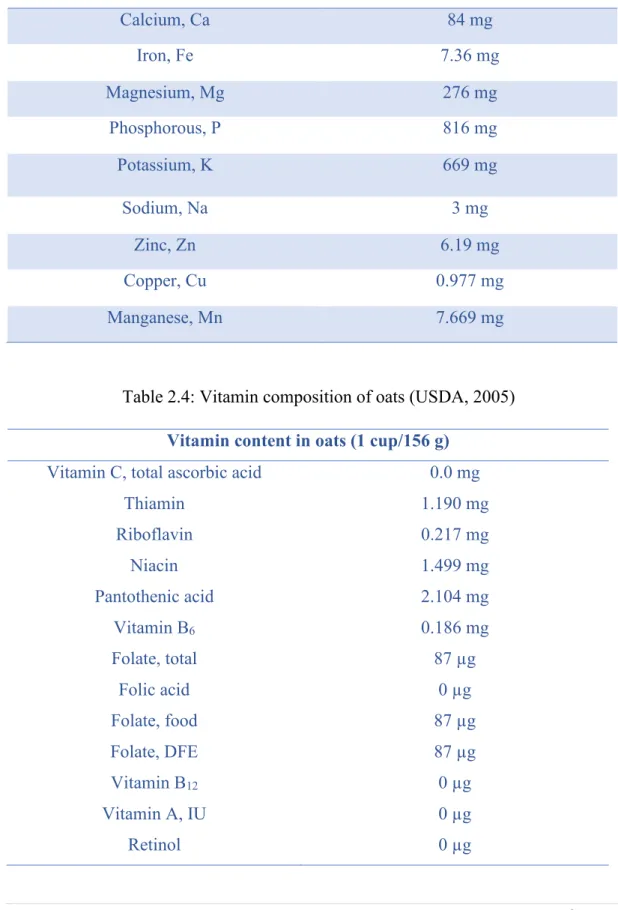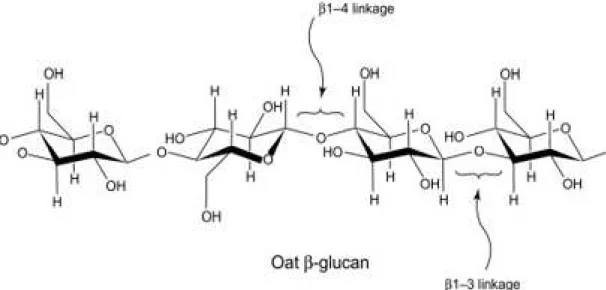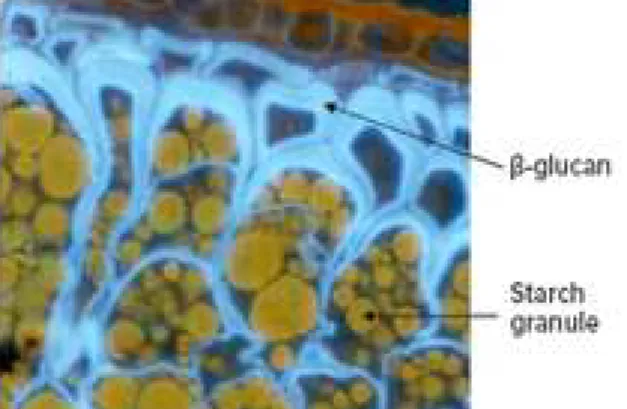Oats (Avena sativa)
Nutritional profile of oats (Avena sativa)
Multiple receptors have been implicated in PI3K/Akt stimulation by glucans ( Hsu et al., 2002 ; Chen and Seviour, 2007 ). Another study found that oats are beneficial in the treatment of hypertension (He et al., 2004). Because starch co-extracts at temperatures above 60°C (gelatinization temperature), starch must be eliminated from the extract (Wood et al., 1977).
The MW of β-glucan obtained was affected by extraction temperature and cultivar type (Maheshwari et al., 2017). The following three methods (hot water extraction, alkaline extraction, acidic extraction) were then followed (Ahmad et al., 2009) with some modifications for the extraction of soluble β-glucan. This determination was carried out by the L-cysteine sulfuric acid method (Climova et al., 2021; Wood et al., 1977).
Impurities such as fat, protein, starch, pentosans and mineral (ash) substances were removed in addition to beta-d-glucan. The increased enzymatic recovery in that study was due to prior treatment with ethanol and the use of appropriate enzymes that inhibit the intermolecular interaction of beta-d-glucan with other oat components, resulting in improved extractability of beta-d-glucan (Ahmad et al., 2010). The specific measurement of glucose in oat gum was carried out using a cysteine-sulfuric acid reaction with a beta-glucan solution (Wood et al., 1977). The concentration of β-glucan in the extract was determined using the L-cysteine sulfuric acid method (Climova et al., 2021).
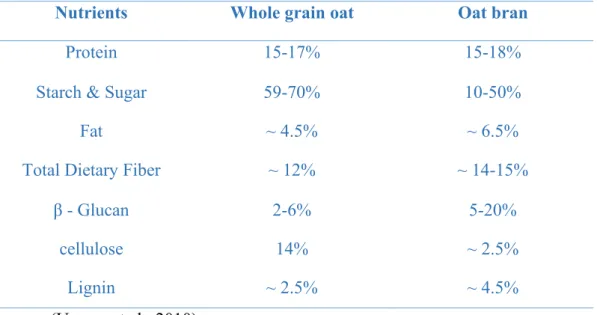
The chemistry of oat β-glucan (a biological defense modifier)
Therapeutic attributes of oats against diabetes & others metabolic disorders
- Oats against dyslipidemia
- Oats help to manage weight
- Oats against type 2 diabetes
- Oats may help to reduce hypertension
- Oats against proinflammatory state
- Oats lessen the risk of cancer
Oat fiber favorably modulates fasting and postprandial atherogenic blood lipids and other lipoprotein fractions independent of other dietary changes, so it has been demonstrated to be beneficial in reducing the risk of SHD (Butt et al. 2008 ). As a result, it is emphasized that the consumption of oats and oat products is crucial in reducing the risk of cardiovascular diseases (Singh et al. 2013). Beta glucans, which are found in oats and have the ability to make gels, help control blood sugar levels (especially in cases of type II diabetes) (Butt et al., 2008).
According to Zerm et al., oatmeal diet days can help people with type 2 diabetes mellitus reduce their insulin resistance (Zerm et al., 2013). Recently, it was found that orally administered β-glucan significantly stimulates the proliferation and activation of monocytes in the peripheral blood of patients with metastatic breast cancer (Demir et al., 2007).
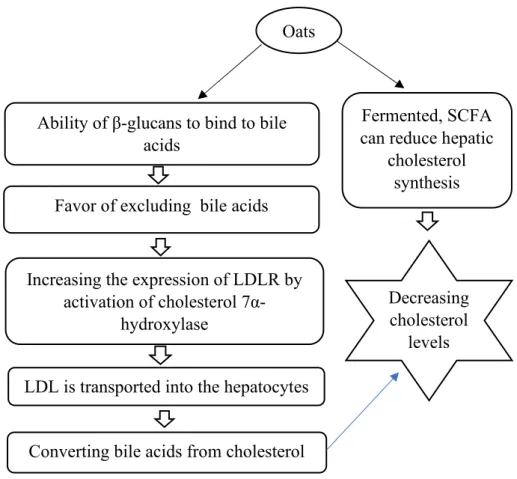
Extraction procedures of β-glucan
The decrease in the risk of intestinal and other malignancies is undoubtedly one of the most important physiological effects of these fermentations. It can reduce the risk of breast cancer, prostate cancer and colon cancer over time (Perry and Ying, 2016). Although β-glucan was effectively extracted from grain using this approach, McCleary demonstrated that sequential water extraction at 40, 65 and 950C increased the extraction rate and yield of barley β-glucan to 90% (Brennan and Cleary, 2005).
Another study found that enzymatic extraction yields more than acid or alkaline extraction, but this study found protein to be the main contaminant (Ahmad et al., 2010). Similarly, adding enzymes to the extraction process improves the viscosity of dietary fiber by releasing β-glucan from the food matrix, according to another study (Gamel et al., 2014).
Water Extraction
21 | P a g e The effect of extraction methods on the physicochemical and functional properties of β-G isolated from barley was examined by Ahmad and co-workers (2009). According to their findings, (i) the yield of β-G obtained by acid extraction was lower than that obtained by hot water and enzymatic extraction, but higher than that obtained by alkaline extraction, and (ii) of the four methods, hot water extraction gives the highest yield and purity, ensuring maximum impurity removal.
Acidic Extraction
With a modified process, the yield of β-G from oat was extracted under acidic, alkaline and enzymatic conditions, and it was found that the yield from acid extraction was the lowest. They found that oat β-glucan isolated under the above-mentioned circumstances had a modest amount of protein as well as major and minor components such as P, K and Ca, as well as good water binding capacity (WBC), viscosity and properties whipping suitable for industrial applications (Ahmad et al., 2010). When comparing alkaline and enzymatic extractions with drained oat flour, acid extraction gave a lower yield of β-glucan (Babu, 2015).
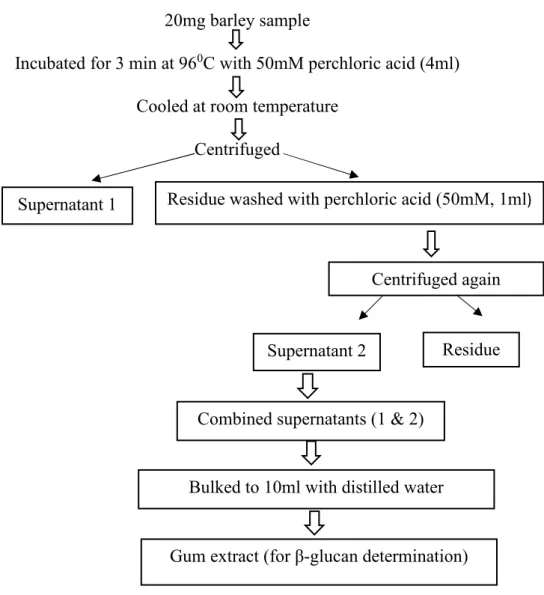
Alkaline Extraction
24 | P a g e For the isolation of β-G from oats, Wood and colleagues (1978) used an alkaline extraction procedure and examined the effects of particle size, solvent/sample ratio, temperature and the effect of enzyme deactivation on the extraction yield. The viscosity of β-G produced from barley is also found to be lower than that of oats. On a laboratory scale, 1.0 M NaOH was used throughout the extraction method, although 0.75 M NaOH was also found to be equally effective.
At the pilot plant scale, 0.25 M NaOH was used to avoid handling hazards, and extraction was found to be as high as that seen in the laboratory with 0.75 M NaOH (Bhatty, 1995). The efforts on qualitative extraction and quantitative separation of oat β-G are necessary for obtaining the full benefits of β-G, which requires its availability in high amounts (Maheshwari et al., 2017).
Study area and Study period
Layout of experiment
Sample collection and preparation
Hot water extraction of β-glucan
Alkaline extraction procedure of β-glucan
Then 250 mL of ethanol (80%) was added to the conical flask and the solution was refluxed (evaporation + condensation) for 6 h using a Soxhlet apparatus. Then the flour is mixed with 1M NaOH in a ratio of 1:7 and the solution is mixed with a magnetic stirrer for 90 min at a temperature of 550C. After centrifugation, the supernatant (liquid overlying a solid residue) was separated and mixed with 1 M NaOH in a 1:3 ratio.
Then the supernatant was adjusted to pH 7 with citric acid and centrifuged at 9000 rpm for 30 min. At that time, the supernatant was mixed with 80% ethanol in 1:1 ratio and kept for 20 min at room temperature and β-glucan glue (white color) was floated on the ethanol solution.
Acidic/ solvent extraction of β-glucan
Then 250 mL of ethanol (80%) was added with the flour to make a solution and the solution was refluxed (evaporation + condensation) for 6 hours using a Soxhlet apparatus. After that, the flour is mixed with 1M citric acid in a ratio of 1:7 and the solution is mixed with a magnetic stirrer for 90 min at a temperature of 550C. After centrifugation, the supernatant (liquid overlying a solid residue) was separated and mixed with 1 M citric acid in a 1:3 ratio.
Identification tests of β-glucan
Crude fiber
The residue was then dried in a convection oven at 105°C until a constant weight was found. Finally, the residue was burned into smoke and lit in the muffle furnace at 550-660℃ for about 4-6 hours until it became white ash. The ash particles were weighed and calculated to determine the raw fiber content of the sample.
The limitation of the test is that acid and base dissolve some true fibers, especially hemicellulose, β-glucan, pectin, lignin.
Spectrophotometric determination
For the preparation of 6 ppm, 50 ml of glucose solution, 300 µl of standard was added to 50 ml of deionized water. The concentration of pure β-glucan was measured with a spectrophotometer at 415 nm wavelength and with the glucose standard curve shown in Figure-3.7. Then, the known molecular weight of glucose, oat β-glucan and the determined concentration of β-glucan can be determined.
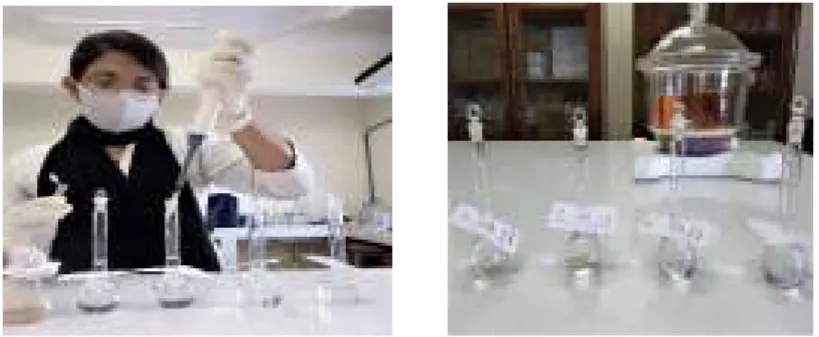
Extracted yield of β-glucan gum
According to the purpose of the present study, three subsequent methods were carried out for the extraction of β-glucan (a soluble dietary fiber) from oats. The weight of β-glucan gum obtained from 100 g oat flour is referred to as the yield of gum product. Another reason for the increased yield of β-glucan (6.94%) in the alkaline extraction procedure could be related to higher starch gelatinization and protein solubilization.
Due to cleavage of β-glucan by the enzyme β-glucanase, Symons & Brennan (2004a) observed a reduced efficiency of hot water extraction. Spectrophotometric analysis was performed to determine the extracted yield and processing of the β-glucan extract. Comparing the efficiency of different extraction procedures in terms of β-glucan recovery percentage, alkaline extraction resulted in higher β-glucan recovery and recovery.
Glycemic index depression by high levels of β-glucan fiber in two functional foods tested in type 2 diabetes.
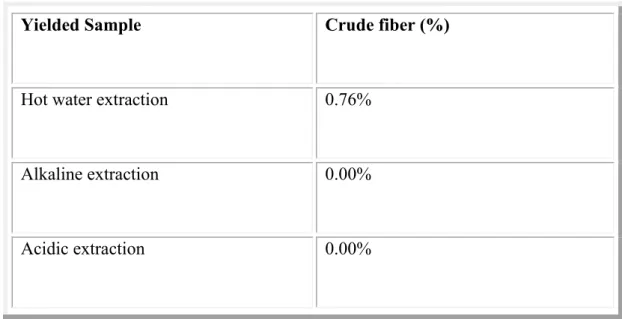
Crude fiber
Spectrophotometric analysis
Quantification in spectrophotometric analysis and determination of extracted yields (β-glucan gum product) represents the absorbance of light with the concentrate in the β-glucan sample solution. The highest absorbance of 0.8039 was obtained when the alkaline extracted sample was used, followed by 0.4630 when the hot water extracted sample was used, while the lowest absorbance (0.1469) was analyzed in the acid extracted sample .
Extracted yield of β-glucan gum
The qualities of the final product are affected by various parameters involved in the extraction conditions, such as pH, temperature, extraction time, centrifugal gravity and purification as well as isolation procedures. To avoid glucan destruction via hydrolysis, it is recommended that the innate β-glucanase enzyme be deactivated by ethanol treatment prior to the extraction method. While non-solubilized starch must be extracted at a low temperature of 50°C, solubilized starch in extract can be eliminated by using a specialized enzyme.
Protein can be eliminated by precipitation at pH 4.5 (optimum pH: 4 to 6), ammonium sulfate precipitation, or the use of a specific enzyme. Purification of β-glucan can be accomplished by centrifuging the extract several times and freezing the supernatant, or by precipitating the resulting precipitate containing β-glucan with alcohol and vacuum drying (Maheshwari et al., 2017).
Spectrophotometric Analysis
39 | P a g e Compared to the hot water extraction and acid extraction procedures, the percentage of glucose concentration was highest in the alkaline extraction method.
Crude fiber
The alkaline extraction method was found to be successful because it produced the highest yield of beta glucan gum. Future research into the use of oat beta-glucan as a functional food ingredient is absolutely warranted. In particular, the interactions of beta glucan with other food components are essential to increase its use in the production of food and other unique products.
It will be interesting to learn how β-glucan can be used in identifying innovative products for use in our daily diets, as well as the impact of different processing and packaging technologies on β-glucan and its interactions with other ingredients. of the food matrix. A rapid and simple method for the determination of starch and β-glucan in barley and malt. Beta glucan promotes the proliferation and activation of monocytes in the peripheral blood of patients with advanced breast cancer.
Enzymatic extraction of beta-glucan from oat bran grains and oat biscuits and optimization of viscosity measurement.
